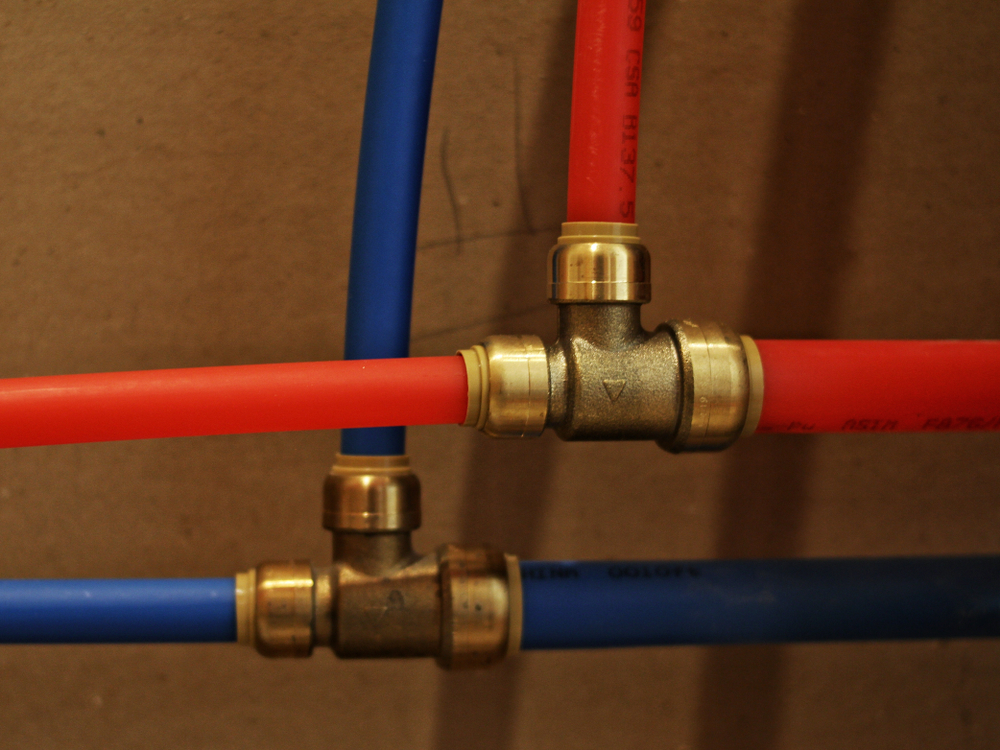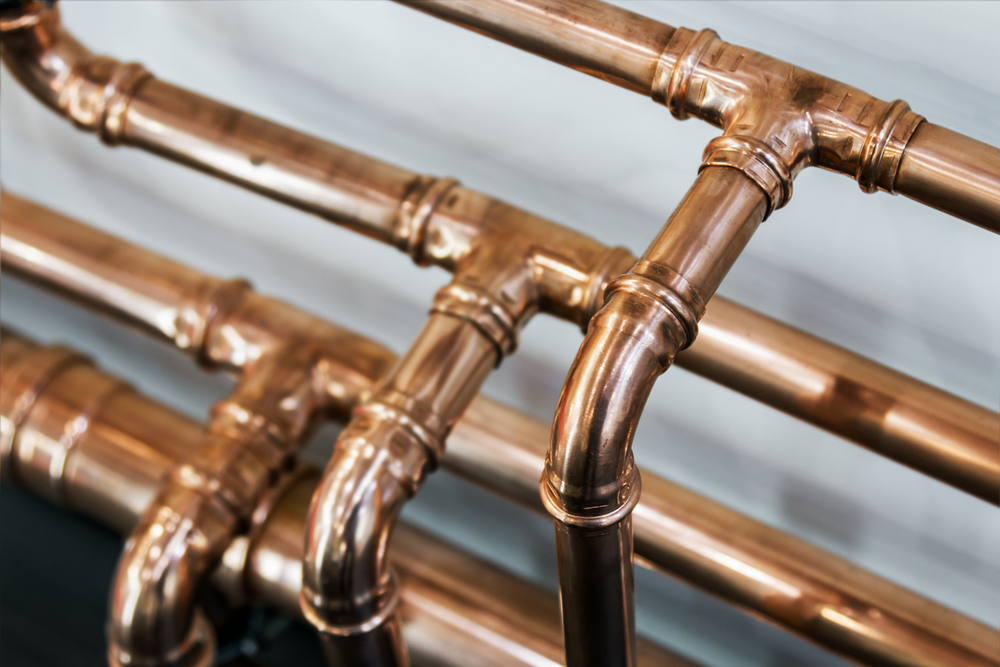Understanding the different types of plumbing materials that are present in your home is crucial for you to make a decision on the types of maintenance and repair services to go with. Plumbing material can be made from a variety of materials. However, two of the most common materials are PEX and copper. Both materials possess unique advantages and disadvantages that make them shine in different scenarios.
In this article, we’ll look at the pros and cons of PEX vs. copper plumbing. Those who are interested in switching to different materials can take this guide into account when making a decision.
PEX Pipes

Cross-linked polyethylene (PEX) is a new type of plumbing material that’s made from flexible plastic. It was first discovered in 1968 by a German scientist named Thomas Engle, and has become increasingly popular due to its unique properties and advantages.
There are several different types of PEX pipes. They mostly vary in how they are manufactured, but the unique manufacturing processes also give each type distinct properties on top of the general advantages and disadvantages that they have to offer. The different PEX designations include PEX-A, PEX-B and PEX-C.
PEX-A
PEX-A plumbing is made with peroxide. This type of PEX plumbing is the most flexible of the three and is perhaps one of the most popular options. The flexibility of this plumbing means that it is most resistant to temperature changes. PEX-A plumbing is the most expensive option of the three.
Those who are looking for cheaper alternatives to PEX-A should consider PEX-B plumbing. It has similar properties to PEX-A. With that said, those who are looking for top-of-the-line plumbing repairs or those who are considering the option of repiping their whole home should splurge on PEX-A plumbing. It’ll last a bit longer and is extremely versatile.
PEX-B
PEX-B pipes are similar to PEX-A pipes; however, they are made using a moisture-cure method that makes them stiffer than PEX-A plumbing. This unique manufacturing method gives the plastic some type of “memory,” so it’ll return to its original coiled state.
The coil memory is not the only distinctive advantage that this type of plumbing is able to offer. This material is also resistant to cracking, so it’s an ideal choice for those who live in colder climates. The material will not crack, even when the water freezes. It’s cheaper than PEX-A plumbing, but more expensive than PEX-C plumbing.
Another interesting thing to mention is that PEX-B plumbing has an increased resistance to chlorine. Due to this reason, this type of material is often used for pools.
PEX-C
PEX-C piping is made by a unique, cold crosslinking process known as the electronic irradiation system. The particles are cross-connected and then linked together using an electronic radiation beam.
In comparison to the other types of PEX plumbing mentioned above, PEX-C is perhaps the stiffest of them all, so it’s also the most difficult one to work with. The stiffness of this type of material means that it is more prone to kinking, and it can also crack if the water inside the plumbing freezes.
Due to this reason, PEX-C is usually recommended only for short repairs. It should not be used in situations where there are bends and sharp corners. With that said, PEX-C is a highly sought out material due to its affordability. It is much cheaper than PEX-A and PEX-B plumbing.
Advantages and Disadvantages of PEX Plumbing
Although there are different types of PEX plumbing, they all offer the same types of advantages and disadvantages that make them stand out from other types of plumbing materials. Let’s take a look at some of the most obvious advantages and disadvantages below.
Advantages
- Lots of ways to make watertight connections, from copper crimping to stainless steel clamps.
- Affordability, as PEX plumbing costs only a fraction of copper plumbing.
- Expandability, as it can expand up to 8 times in size before it freezes.
- Ease of use, as this type of material is very simple to join and cut.
- Flexibility, so it can easily travel around obstacles in its path.
- Kink repairability, as kinks can be easily repaired without any complicated procedures.
- DIY friendly, as it can be used by the average Joe to perform plumbing repairs.
- Risk of producing toxic fumes, as the plastic can soften and exude unwanted vapors in the presence of high heat.
- Poor rigidity, so it doesn’t maintain its structure and shape well.
Disadvantages
- Risk of producing toxic fumes, as the plastic can soften and exude unwanted vapors in the presence of high heat.
- Poor rigidity, so it doesn’t maintain its structure and shape well.
Copper Pipes

Copper plumbing has a lengthy history. It first appeared in Egypt in 2400 BCE, and has been used throughout history for drainpipes and plumbing. This is perhaps one of the most common plumbing materials used in America today, and you’ll find copper plumbing in many older homes.
Copper plumbing can be used for all types of plumbing purposes. They are an ideal choice for heating systems, although some homeowners are now interested in replacing cold water applications with PEX plumbing.
Types of Copper Pipes
There are two different types of copper tubing: soft copper and rigid copper. Each possesses its own unique advantages and disadvantages and can be used in different scenarios.
Soft copper can be bent easily to circumvent any obstacles that may be in its path. This type of copper tubing is a tad more expensive than rigid copper, but it is suitable for flare connections, and is commonly used in heat pumps, AC systems and refrigerant lines.
Rigid copper, on the other hand, is often used for water lines. It is not as flexible as soft copper and can maintain shapes (like grooves and crimps) well. As this type of copper is not flexible, it requires elbow fittings to circumvent any obstacles that may be in its path.
Thickness of Copper
Copper piping can also be separated into different types based on its overall thickness. The thickness can be separated into the following categories: Type K, Type L, Type M, and Type DWV.
Type K is the thickest and can handle the most pressure. This type of copper piping is generally used for outdoor purposes, like for connecting the main water line under sidewalks and streets. This type of copper tubing usually has a protective coating overtop that will prevent it from getting damaged or from corroding.
Type L is a bit thinner and is often used in both residential and commercial water supply applications. It’s one of the most common types of plumbing material used for residential purposes.
Type M is even thinner than Type L and is often used in low-pressure heating applications. This type of tubing is typically only available in hard drawn straight sections.
The thinnest type of copper tubing is the type DWV. This is used for unpressurized applications, like drain lines.
Advantages and Disadvantages of Copper Plumbing
There’s a reason why copper plumbing has been used for such a long time. It offers a lot of advantages over other materials. Although copper plumbing isn’t expensive, PEX plumbing is an even more affordable option.
Let’s take a look at some of the advantages and disadvantages that are unique to copper plumbing below.
Advantages
- Reusability, so it’s great for the environment.
- High rigidity for increased durability and structure.
- Higher resistance to heat, so it’s great for high-heat zones like radiant floor heating.
- Impermeability, so it can prevent chemicals and other contaminants from entering the water supply and system.
- Longevity, as these types of materials can last several lifetimes.
- Corrosion resistance ability that makes it an ideal choice for many different situations.
- Copper needs to be soldered and also cut properly, which can be a time-consuming process.
- Issues with compatibility with other types of metals, so homeowners must use caution when performing repairs.
Disadvantages
- Copper needs to be soldered and also cut properly, which can be a time-consuming process.
- Issues with compatibility with other types of metals, so homeowners must use caution when performing repairs
Both Materials Possess Their Own Unique Traits
It’s difficult to say whether PEX or copper pipes are better for the plumbing in your home, as both materials possess their own unique advantages and drawbacks. Those who are interested in reliability and longevity should go with copper, while those who are looking for more functionalities may go with PEX plumbing.
In general, most homeowners will usually stick to the plumbing that’s already present. However, if you’re going to repipe your whole home, you might want to consider switching to another material that will be more beneficial for your situation and better suited for your needs. Whether copper or PEX may be more compatible with any existing plumbing structures will need to be determined before the repairs by a licensed and insured plumber.
